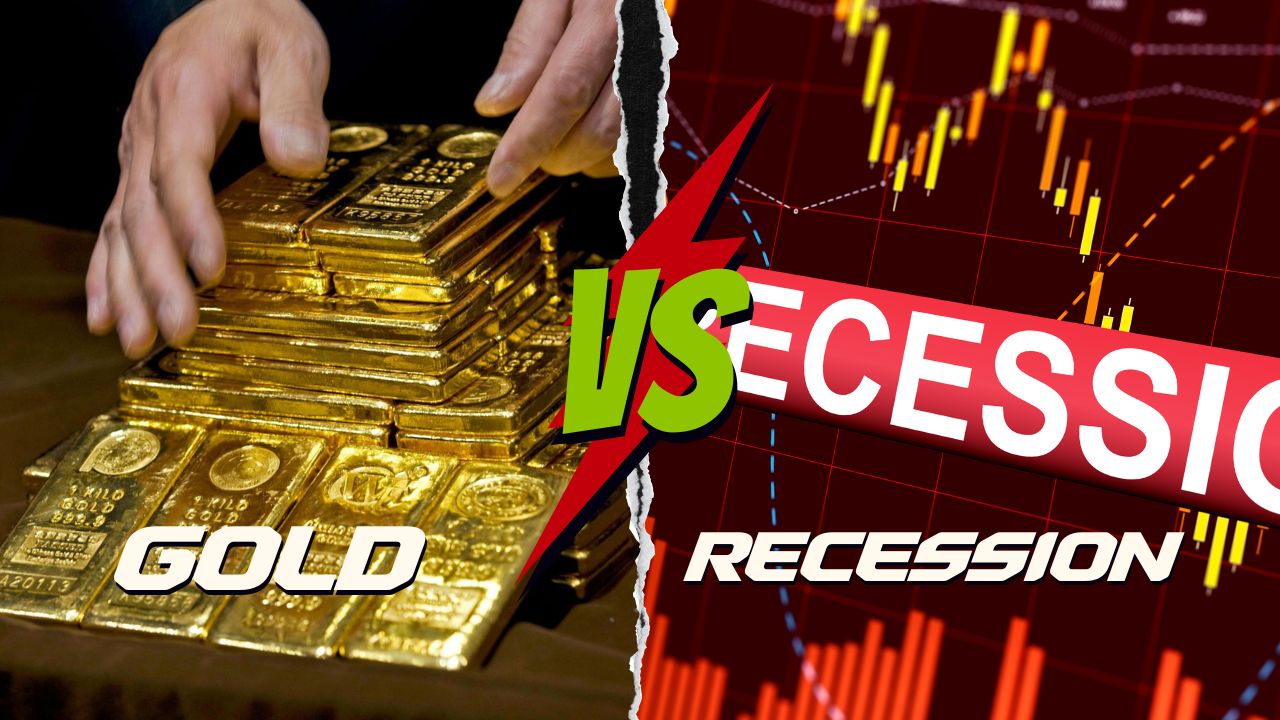Financial markets have been indicating a possible US recession through signals such as an inverted yield curve where long-term interest rates are lower than short-term rates, a typical indication that a recession may be approaching. The recent weak US ISM services data further supports the idea of a near-term recession. As investors assess their asset allocations, analyzing the historical performance of gold and gold equities during previous US recessions can be helpful.
How has gold performed in previous US recessions?
The table below shows returns of gold over the last seven US recessions going back to 1973.

The overall conclusions about the relationship between gold and US recessions are clear. Gold tends to perform well in absolute and relative terms during US recessions.
Specifically, when looking at the returns from six months before the start of a recession to six months after its end, gold has returned an average of 28% and outperformed the S&P 500 by 37%. However, it is worth noting that every economic cycle is unique, and multiple factors influence the gold market.
When I began to study the markets more thoroughly in 2004, I concluded that four major fundamental pillars supported the last 4 major bull markets in gold and silver over the past 100 years.
- Currency Depreciation (Right now, the USD Vs the basket of currencies referred to as the USD Index)
- Inflation or the threat of inflation
- Geopolitics and Geopolitical instability
- Supply and Demand.
Since 2002 when US/CDN policy responses have been particularly accommodative, the performance of gold has been solid, as seen in 1973, 2008, and 2020. It is expected that future policy responses to US recessions will also be highly accommodative, given the high aggregate debt levels and large deficits that pose a risk of a severe recession.
What about the poor returns in 1981 and 1990?
The poor returns for gold in 1981 and 1990 were due to specific circumstances. In 1981, the "Volcker recession" was caused by significant interest rate increases aimed at curbing inflation, regardless of the economic consequences. This was when inflation was well over 10%, approaching 15%-20% at street levels, while mortgage rates jumped in some cases higher than 20% here at home in Canada. Savings account rates of 10%+ were the norm. It was far easier to accumulate wealth safely with fewer derivatives, speculative dangers and little to no real estate speculation.
This was a transformative, paradigm-shifting moment in monetary policy that marked the start of a prolonged bear market for gold and silver (Until the mid-'90s and subsequently the beginning of this bull market in 2002). Additionally, the high inflation period of the late 1960s/70s caused gold prices to increase dramatically, making the base for gold bullion and gold equities very high.
Today
These days the USA has over $31 trillion in debt, or 120% of the economy (our federal debt is $1.5 trillion, or almost 75% of GDP. Not-so-bad, in comparison). Given the highly high sovereign debt levels, however, and significant deficits today, it is unlikely that a repeat of a Volcker-style intervention would occur without causing systemic financial collapse.
In 1990, the mild recession followed Iraq's invasion of Kuwait and marked the beginning of aggressive central bank gold sales that lasted throughout the 1990s and early 2000s. This period is in stark contrast to today, where central bank gold demand is at record levels and is expected to remain strong. Central bankers have been net buyers of gold since approximately 2009.
Right now, it is imperative that countries planning to succeed in a new multi-currency global economy have access to generationally sound assets. Gold is used as a backing mechanism or "insurance policy" for their foreign reserves. If they do not follow through on this (and Canada is not), these countries without gold holdings will be left at the dance without a partner.
In reality, I have always maintained that it is imperative to be resourceful and recognize the pitfalls of being too one-sided in your wealth distribution, as we currently have only stocks, bonds and cash in the average wealth strategy. It is more than high time that this behaviour needs to change. Gold and silver are for everyone, big or small, wealthy or growing wealth. Everyone should own it. What you do next is up to you!
Yours to the penny,
Darren V. Long
Delta Harbour Assets Inc.






